Construction Projects



We li ve in a re gi on in whi ch 90 % of ou r ti me is sp en t in do or s. St ud y af te r st ud y ha s sh ow n th e ef fects of in do or ai r qual it y, da yl ig ht in g an d ot he r en vi ro nm en ta l fa ctor s as th ey re la te to th e he al th an d we ll -b ei ng of a bui ldi ng ’s oc cupa nt s— whi ch is wh y JLG’s na tio na ll y- re co gn ized su st ainab ili ty te am ma ximi ze s in do orde si gn op po rt uni ti es to lo we r si ck day s, in c re as e prod ucti vi ty, an d ra is e prod ucti vi ty fo r eve ry one of ou r cl ients





































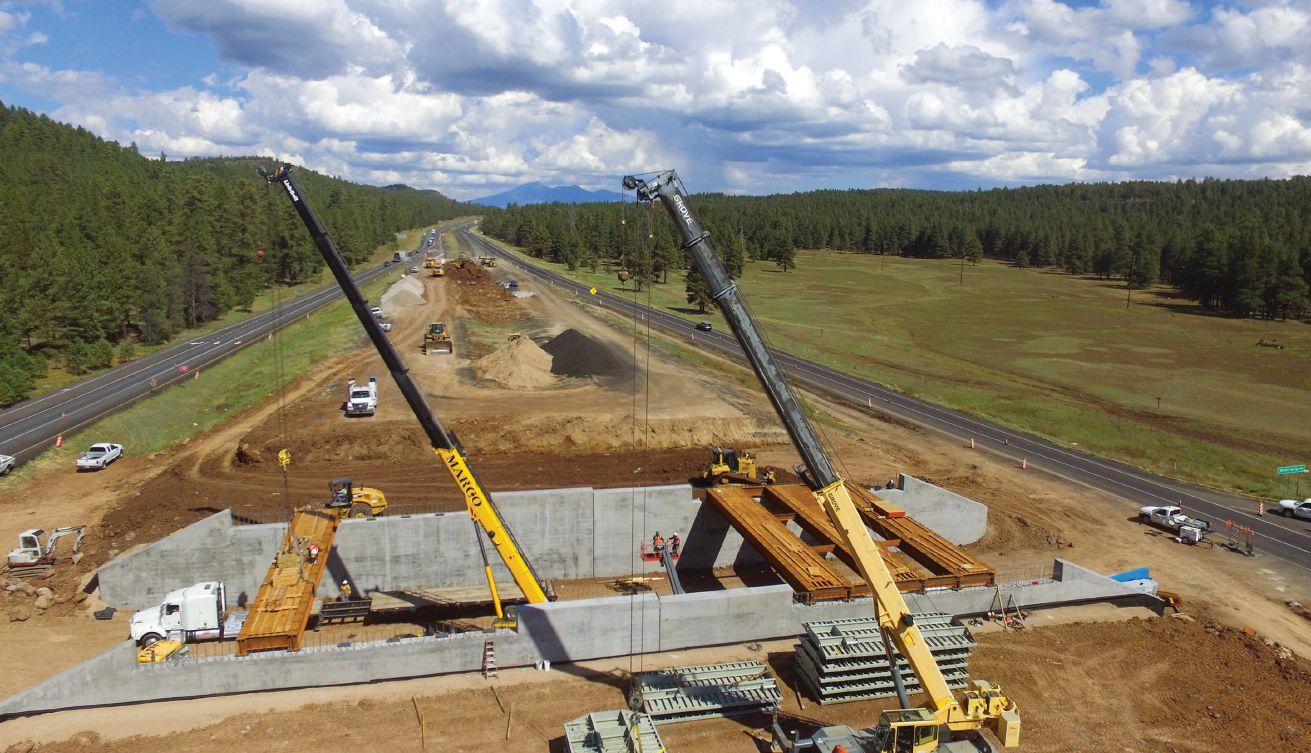
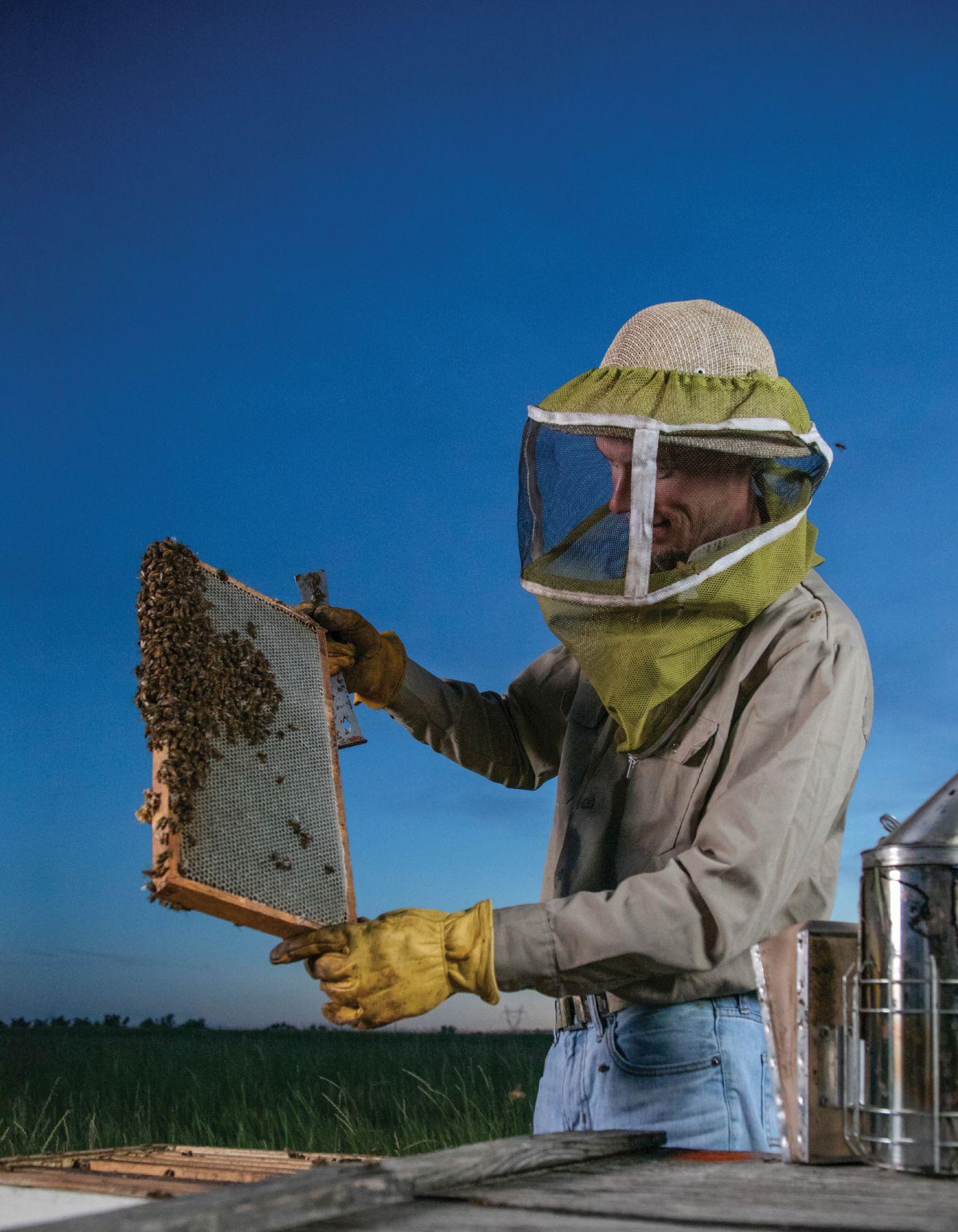
Environmen tisn’tjustabuzzword atBasinElectric.
BackerBeeshasbeesatGlenharoldMine,areclaimedcoal minethatusedtosupplycoaltoourfirstpowerplant.The reclaimedpasturehasavarietyofflowers−alfalfa,clover, sunflowers,wildflowers−makingitoneofthebestareas inthenationtoraisebees.
Environmentalstewardshiphasalwaysbeena guidingprincipleforus.That’swhywe’re committed toreclaimingandrestoringlandbacktoitsnatural state,likeGlenharoldMine.
‘‘Thisis one of the best areas in the na tion toraise bees.’’
I. HE WILL PRIMARILY WORK IN THE FIELD, PROVIDING SURVEY AND CONSTRUCTION OBSERVATION SERVICES FOR PROJECTS ACROSS WESTERN NORTH DAKOTA. A MINOT NATIVE, PULKINEN HAS WATCHED FLOODS, OIL BOOMS, AND OTHER EVENTS CREATE AN ONGOING NEED FOR NEW RELIABLE INFRASTRUCTURE THROUGHOUT THE REGION. HE EARNED HIS ASSOCIATE DEGREE IN PETROLEUM ENGINEERING TECHNOLOGY FROM BISMARCK STATE COLLEGE AND HIS BACHELOR’S DEGREE IN GEOLOGY FROM MINOT STATE UNIVERSITY. PULKINEN’S EXPERIENCE AND EDUCATION MAKE HIM A GREAT ADDITION TO HEI’S TEAM TO ENSURE INFRASTRUCTURE BEING BUILT WILL SERVE CLIENTS FOR YEARS TO COME.
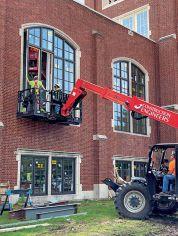

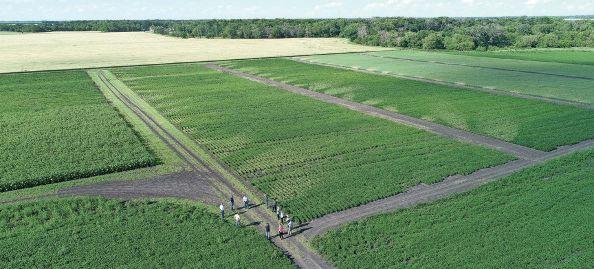
Perfectly designedtothriveinitsenvironment. Adaptableenoughtoevolvewiththetimes. Buildingsmar tfor asolidfuture.It’ssecond natureatKLJ.

KLJENG.COM
Buildingonourlegacyofcraftsmanshipwhilecreatingunparalleled valueand exceptional experiences forourcustomers.

www.mcgough.com

In September, Prairie Business decided to try something new: a video awards presentation.
The awards presentation, introduced by Prairie Business Publisher Korrie Wenzel and sponsored by First International Bank and Trust, TrueNorth Steel, Marco and Office Sign Company, was to honor the magazine’s latest 40 Under 40, Top 25 Women in Business, and Leaders & Legacies recipients.
In all, 75 individuals were recognized – business professionals nominated by their peers, employees and coworkers and selected by Prairie Business staff.
This year’s recipients, in all of the categories, are exemplary leaders in their industries and communities and Prairie Business is pleased to salute each and every one of them.
The magazine has hosted a recognition event for the past five years, with attendance growing annually to around 200 last year. But this year, due to the coronavirus pandemic, a change was necessary.
We hope to be able to socialize and present next year’s awards in person. But the great thing about this year’s video presentation is that it initially reached many more people through the magazine’s website, its sister publications including the Grand Forks Herald, and social media. And, it can be shared over and over again.
If you missed it, the 33-minute video can be found on the Prairie Business website, prairiebusinessmagazine.com, in the story headlined “Prairie Business releases its first video awards presentation, honoring dozens from the region.”
Though the video lives on in cyberspace, it is now October and that means it is time to start focusing on the next batch of exceptional leaders in the region. Prairie Business, also in September, opened the nomination period for the next 40 Under 40 list. Deadline to submit nominations is by the end of day on Friday, Oct. 16. Go to prairiebusinessmagazine.com to find a link to the nomination form.
Magazine staff look forward to reading this year’s nominations and learning more about some of the young professionals who are making an impact in their industries and communities.
Before you advance to the nomination form, however, how about checking out the stories in this month’s issue – stories on construction, energy and technology.
There’s more, of course, and we hope you enjoy the read.
Until next time, Andrew Weeks
I look forward to hearing from you at aweeks@prairiebusinessmagazine.com or 701-780-1276.
PUBLISHER
KORRIE WENZEL
AD DIRECTOR STACI LORD
EDITOR
ANDREW WEEKS
CIRCULATION MANAGER BETH BOHLMAN
LAYOUT DESIGN JAMIE HOYEM
ACCOUNT MANAGER
NICHOLE ERTMAN 800.477.6572 ext. 1162 nertman@prairiebusinessmagazine.com
Prairie Business magazine is published monthly by the Grand Forks Herald and Forum Communications Company with offices at 375 2nd Avenue North, Grand Forks, ND 58203. Subscriptions are available free of charge. Back issue quantities are limited and subject to availability ($2/copy prepaid). The opinions of writers featured in Prairie Business are their own. Unsolicited manuscripts, photographs, artwork are encouraged but will not be returned without a self-addressed, stamped envelope.
SUBSCRIPTIONS
Subscriptions are free www.prairiebusinessmagazine.com
ADDRESS CORRECTIONS
Prairie Business magazine Box 6008 Grand Forks, ND 58206-6008
Beth Bohlman: bbohlman@prairiebusinessmagazine.com
ONLINE www.prairiebusinessmagazine.com

SPONSORSHIPS aredesigned to assistbusinesseswith RECRUITING and RETAINING qualifiedemployees inindustriesthatare experiencinga workforce shortage.
Sponsors formanagreementwithacurrent orfutureNDSCS studentthatprovides financialsupport forthe student’s education, in return forfutureemploymentwiththe sponsor.
To bematched with a future employee and learnmore about StudentSponsorships,visit NDSCS.edu/Sponsorships.

PRAIRIE BUSINESS is looking for young professionals who are making significant impacts in their chosen profession, industry and communities. Nominees can be entrepreneurs, industry experts, executives, nonprofit, or community leaders. Previous honorees have included business owners, patent holders, professors, venture capitalists, corporate executives, economic developers and nonprofit directors.
of this year’s award will be announced in the December 2020 edition of Prairie Business Magazine.

When William Aderholdt looks at a farm, he doesn’t just see rows of crops or hulking combines — he sees the future. Aderholdt is the program manager at Grand Farm, the future-farming test site near Fargo that’s poised to help usher in a new generation of agriculture. For now, Aderholdt explains, the test site isn’t much more than 40 acres and a tent — but it’s already working with NDSU researchers on using drones for better weed detection. Other partners and projects include the U.S. Department of Agriculture and CHS, the global agribusiness company.

For now, when Aderholdt speaks about the kinds of projects at Grand Farm, he talks about drones and mapping crops, finding weeds and making farming more efficient. But with plans in place to expand the farm soon, Aderholdt said there’s far more in store. He talks excitedly about what the decades ahead could bring in the field — no pun intended — and sees far lower labor costs. In an earlier interview this year, he spoke excitedly about the far-flung possibility of farming on the moon or Mars.
“I can’t speak to what we’re planning for ‘21 yet, because no one’s locked in for sure yet,” Aderholdt said in September of next year’s work. “But I could foresee some autonomous tests.”

Grand Farm sprung to life under the umbrella of Emerging Prairie back in 2017, quickly gaining traction and funding — and notably a $1.5 million investment from Microsoft late last year.

At the beginning of this year, Aderholdt said he wasn’t sure if tests would be scuttled by the pandemic. But partners like the USDA, NDSU and CHS jumped in, and Grand Farm has been hosting events all summer (socially distanced, Aderholdt stressed) showcasing their work and the future.
Frank Casey is director of NDSU’s school of natural resources and a leader with its agricultural experiment station. He spoke excitedly about all the different skills and projects NDSU professors are bringing to the site — and he points out that one of the big strengths of Grand Farm is that it’s a magnet for so many minds interested in the future of farming. That can lead to exciting projects.
“Basically like a speed-dating platform, right?” he said. “You’re bringing people together and making good things happen.”
The ultimate promise of places like Grand Farm is a radically reshaped farm of the future. There are, of course, plenty of ways to imagine that — but one of them is through automation, which could stand to drastically lower labor costs and barriers to entry.
The USDA’s Economic Research Service said that, between 1990 and 2019, nonsupervisory crop and livestock workers’ wages grew 1.1% per year on average — after adjusting for inflation. But near the end of that period, it grew at an annual rate of 2.8%. In short, farm labor is getting more expensive.
continued on page 14






continued From page 12
And estimates on the cost of entering the farming industry are typically enormous. One estimate, in Successful Farming magazine, put it north of $5 million to launch a grain farm in the central Midwest.

Alderholdt points out that a highly automated farm wouldn’t need to run an expensive combine eight hours a day with paid labor, though. It could just as easily run an automated combine — a fixed, one-time cost — for 14 hours a day. The economies of scale change drastically when those kinds of technologies are introduced, and that’s the promise of just one kind of new tech Grand Farm could help explore.
That kind of transformative change is far in the future, but slowly arriving already. In 2015, Sioux Falls’ Argus Leader was already reporting at length on the way robotic milking was freeing up a farmer’s time near Tea, S.D. A South Dakota Hutterite colony has adopted the practice, the Tri-State Neighbor reported in 2017.

Of course, it’s a long road to that kind of change. Mark Watne, president of the North Dakota Farmers Union, points out that there’s a big difference between bells-and-whistles technology and the kind that can truly shift economies of scale. And farmers right now, he said, are far more focused on the market that’s been dramatically reshaped by the coronavirus, dropping prices and causing a huge oversupply. Producers can’t grow their way out of it without making the supply problem worse, he pointed out.
“The real issue at hand is that the farms that are short on production, the small pockets of hail or dryness … they’re the folks that really suffer,” Watne said. “They’re having a secondary disaster within a disaster.”
But he pointed out that there’s plenty of room for new farm tech to help make things a little easier — and a little less expensive.
“Farmers like technology,” he said. “And they tend to try to be as current as they can.”

na nc ia l insecu rity ca n lead to st ress, lowered produc tivity, and ot her issues foryour employees. Introduc ing MY AL ERUS, an on line financial gu idance tool that ca n help your employees ma ke better financial decisions. Whet her it is savi ng for reti rement, ma ki nga plan to reduce debt, or ma xi mi zi ng health savi ngs benefits— your employees ca n now ta ke cont rolof thei r financial futu re









Acouple of trends in construction are affecting some industries, including medical and hospitality: prefabrication manufacturing and retrofitting buildings.
Though both have been around for a while, construction professionals in the region said they are seeing them trend upward.
Construction Engineers recently finished a project for Essentia Health that involved converting an old retail building into a state-ofthe-art ambulatory care clinic.
The 23,000-square-foot building in Park Rapids, Minn., now includes 18 exam rooms, space for physical and occupational therapy, a speech therapy department, and a cutting-edge radiology department, among a number of other features.
Essentia moved into the space when Construction Engineers, headquartered in Grand Forks, N.D., was just finishing some final touches with the building in early September.

Mike Dunn, the construction company’s business development manager, said this is not the first time the company has refitted a building for a new occupant. Dunn said vacant retail stores are prime real estate to convert to health clinics, in part because of the open spaces of vacant buildings.
THE INTERIOR OF THE ESSENTIA HEALTH CLINIC IN PARK RAPIDS, MINN., WHICH CONSTRUCTION ENGINEERS RECENTLY COMPLETED. MIKE DUNN, BUSINESS DEVELOPMENT MANAGER FOR THE CONSTRUCTION COMPANY IN GRAND FORKS, N.D., SAID HE’S STARTING TO SEE MORE HEALTH CARE PROVIDERS GO THE ROUTE OF REPURPOSING OLD BUILDINGS INSTEAD OF CONSTRUCTING NEW ONES.

IMAGE: COURTESY OF CONSTRUCTION ENGINEERS
“We did a job very similar for Altru in Grand Forks where we repurposed a Scheels store, there on Columbia Road, into its PT and Performance Center,” he said. “These health care providers want to utilize these locations and save a little bit of money by remodeling into those buildings.”
continued on page 18
Ourcommitmenttothiscommunityisabout morethanputtingenergyintotransmission lines. We’r eintobuyinglocal.Investing here.Supportingcarbon-freeinitiatives. Deliveringenergyyoucancountontobe cleanerandsafer. We’rehereto keepliving roomlampslit.Andfuturesasbrightaswe canmakethem.Becausedoingourpartfor theplacesweliveandworkisgoodenergy.



continued From page 16
Dunn said there are some varying challenges repurposing old buildings, but the benefits surpass the hiccups. A couple of benefits is that the main structure is already built, and retrofitting an existing building instead of building a new one may save the new owners money.
“I think there are definitely challenges with repurposing, but it can also help owners open faster because they’re not undertaking a totally new construction project,” he said. “I think that’s why some of the owners like doing this.” As an example, the Park Rapids project “was a nice open floor plan to begin with … and so it just involved adapting their layout for the flow of patient care and traffic patterns. It was totally transformed.”
While businesses other than medical might find their own purpose for repurposing an existing building, it seems to especially be trending with healthcare providers.
“They typically are in good locations and so the health care folks are seeing there’s opportunity to put some of their specialty needs clinics in more retail locations and repurpose those buildings,” Dunn said. “We’ve seen a number of them do that. We see it all around the area, actually.”
Dunn said he is unsure if the coronavirus pandemic has quickened the trend, because many remodeling projects started before the pandemic was declared. And from what he’s seen, it is a trend not only locally but nationally.
“A lot of these jobs have been in the works for three years or so,” he said. “I think it’s more of a trend nationally with available buildings and, again, trying to fill up space instead of always doing new construction on the outskirts of town, that kind of thing.”
Modular construction and prefabricated buildings also are becoming more popular among medical facilities and the hospitality industry. Something that makes these options appealing, according to Tim Torpey, general manager of B&T Manufacturing in Black Hawk, S.D., is that they are a cost-effective option, especially during economically challenging times.
“There’s no shortage of us having opportunities for projects,” Torpey said. “We continue to grow, and that includes our employees over the next couple of years.”
The company is growing so remarkably, in fact, that it opened a new 60,000-square-foot facility in September in Rapid City.
The Prefabrication and Modular Construction 2020 SmartMarket Report, published by Dodg Data & Analytics, echoed similar sentiments, explaining that prefabrication and modular construction are experiencing significant growth as the construction industry seeks to improve safety, productivity, project quality and cost-cutting measures.
“Clearly the future is bright for continued growth in use of both prefabrication and modular construction” for a number of reasons, according to the report. One of those reasons, Torpey said, has to do with the number of diminishing trade professionals.
“Construction folks will tell you that with the shortage of qualified personnel – when you think about the carpenters and plumbers –there are not a lot of folks going into those trades these days,” he said. “So they’re looking for solutions to still get their job done, and this provides possibly more job opportunities in this market where people
are not going into those other fields as much. This helps to kind of balance that out.”
B&T specializes in prefabricated and modular bathrooms for hospitals, hotels and restaurants, among other industries. The bathrooms are manufactured at B&T’s facility and then delivered to the project site for installation.


“They’re actually complete turnkey bathrooms with tile, mirrors, shower doors, vanities,” Torpey said. “They just slide into the envelope of the building.” Once on site, “we do about two hours worth of connections and you have a fully functioning bathroom.”

Of course, that’s a simplistic explanation. Torpey said there is a lot of pre-planning, measurements, and coordination that happen along the way and long before the bathroom is installed. It never fails him when the job is complete; he is always excited to see a project come together like a finished puzzle.
B&T also is doing something else with bathrooms, something Torpey said he believes will be a game changer on the job site. Say goodbye to portable potties on the construction scene, he said. Say hello to the wellness hub.
The Wellness Hub for Hygiene & Health fits into a variety of environments to connect to sanitation, fresh water, and electrical utilities. It includes natural lighting and porcelain fixtures. Basically, Torpey said, it is a smart bathroom that scans the faces of users to take their temperature, provides a hand-sanitizing basin, and once the occupant leaves the hub it locks the door and automatically sanitizes the room for the next visitor. The hub is on wheels so it can easily be moved to new locations of a job site.
The hub is just another way that Torpey said B&T is following trends and making new ones. In the larger picture, he said some general contractors still have a tough time with prefabricated and modular projects, but he understands why that may be the case.
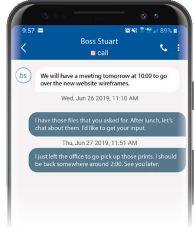



“The general contractors out here, the hotel builders and such, they’ve been doing their stuff for years and years, the way they’ve always done it,” he said.
But he believes prefab and modular will continue to take hold and grow, and those who have come on board with it realize the benefits.
“They see the potential, but it is still that leap of faith,” he said. “Basically what we’re doing, we’re just bringing construction into a manufacturing process.”
ANDREW WEEKS PRAIRIE BUSINESS EDITOR AWEEKS@PRAIRIEBUSINESSMAGAZINE.COM 701-780-1276 | @PB_ANDREWWEEKS
 By Andrew Weeks
By Andrew Weeks
FARGO, N.D. • PRx Performance, a gym fitness manufacturer and distributor, will have a new place to call home next year.
The company is building a 195,000-square-foot building – “basically, it’ll be our new headquarters,” said Project Manager Mike Harlan. “A majority of that is actually going to be warehouse space, but a percentage will be office space as well as a manufacturing portion.
“We’re in the pre-construction phase right now and if we are able to keep things moving along, and keep the next project on course, we’re looking to probably start moving dirt in a couple of weeks,” Harlan said in an interview on Sept. 4. “Mid to late September, that’s kind of our goal.”
Harlan said the company has been thinking about moving into a new building for a while, and it had plans to begin that process over the next couple of years or so, but the coronavirus pandemic accelerated those plans.
“It goes hand-in-hand with a lot of the gym closures and limited hours,” he said, explaining that as more people exercise at home, the fitness equipment business has boomed. “Essentially, due to that increase in sales demand, the need for a new building came about much quicker than we originally planned,” he said. “We kind of found ourselves at projected numbers within three months versus three years.”
He said the $20 million project, located at 24th Avenue North in Fargo, will take about a year to complete and will be ready for use sometime in fall 2021.
Enclave, a fully-integrated development, construction and management company also headquartered in Fargo, has been contracted to do the work.
“We look forward to partnering with PRx to provide them with a new space that not only accommodates their organization’s continued growth but inspires team members to do their best work,” said Enclave’s Derek Hoeschen, vice president of construction.
Hoeschen said in a prepared statement that the project is being designed in collaboration with design and engineering firm, ISG. PRx Performance currently has around 50 employees, Harlan said, but with increased demand for equipment and a new building it continues to add to its employee count. The new building will include some additional features for the new times, including more hand-washing and hand-sanitizing stations.
“We are trying to be smart as far as guidelines go, and it’s tough because they always change as far as what those requirements are,” he said, noting that options will be in place to follow social distancing and other health guidelines as needed. “One thing is that we’re always planning for the future.”
 By Prairie Business
By Prairie Business
MADISON, Minn. • Kraus-Anderson has begun construction on a $15 million expansion at Madison Healthcare Services, an independent healthcare facility in Madison, located in western Minnesota. Madison Healthcare Services is a total healthcare provider featuring a skilled nursing facility, critical access hospital, outreach specialty services, home care services, fully staffed medical clinic,
independent living apartment building and therapy services. Originally constructed in 1952, the 52,639-square-foot renovation includes a 37-unit skilled nursing addition, 12-unit assisted living addition and 12-car underground parking.
Designed by HGA Architects, the project is expected to be completed by summer of 2022.

Each year Prairie Business magazine honors the recipients of our 40 Under 40, Top 25 Women in Business and Leaders & Legacies awards at a recognition banquet in Fargo, ND. This year due to the pandemic, we hosted our event in a virtual format.
You may view the virtual awards ceremony including submitted acceptance speeches from our Leaders & Legacies winners at prairiebusinessmagazine.com
Please join us in congratulating all of this years award recipients and thank you to our event sponsors:

WINDOM, Minn. • The new $22 million Windom Elementary School has been completed.

In May 2018 voters approved a $23.9 million district bond referendum project to prepare students to succeed now and in the future. The school, located at 1200 17th St. in Windom, Minn., is a result of that effort.

Designed by ISG Architects, the project relocated the 4th and 5th grades from the middle school to a new 77,090-square-foot, stand-alone
K-5 elementary school, creating one campus to the existing middle school and high school.
The elementary school alleviates overcrowding, and adds classrooms, flexible learning areas, and safety and security. A music room, art room, media center, student commons and physical education areas were added along with new administration and kitchen areas. In addition, a $2 million remodel of the middle/high school included a 7,000-square-foot precast addition that connects to the existing Ag and Metal shop along the north side of the building. The project also remodeled the existing shop classrooms.
 By Andrew Weeks
By Andrew Weeks
GRAND FORKS, N.D. • Work on the Chester Fritz Library on the University of North Dakota campus is coming along well, according to Mike Dunn, business development manager for Construction Engineers.
“The interior is coming together very nicely and the final finishes are starting,” he said in early September.
The library, a $17 million remodel project that includes around 70,000 square-feet, will have a courtyard-type entry front located off University Avenue, he said, “which will be a more inviting and welcoming space into the main entrance, which has been converted to a three-story atrium.”
A new entry also will be located on the south side of the building.
Some of the challenges have been doing the work while the building remains open and occupied. As such, the project necessitated a number of phases.

“I mean, a dozen or more phases,” Dunn said, “but it’s moving right along and is definitely a huge transformation.”
He said something else happening at UND is the installation of new windows.
“We’re currently re-windowing, putting in a new, upgraded aluminum window system,” he said. “That’s going to be something you’ll see throughout campus.”
Construction Engineers also finished the Fox Hills Elementary School in Watford City, N.D., which opened to students on Sept. 8.
The $37 million, 90-square-foot building that sits on 30 acres will hold about 600 students. In early September, finalization on furniture was taking place as well as landscaping, parking and playground equipment.
At Falcon Plastics, we strive to remain a much-diversified market mix. Our key markets are construction and industrial, medical, sporting goods, electronics, automotive, office products, agriculture, and transportation.
Falcon Plastics, which has four manufacturing facilities in the US — two in South Dakota and one each in Oregon and Tennessee — and a partnership facility in Suzhou, China, produces plastic products for a diverse group of industries.
The pandemic, as it has with business across the country, has brought some challenges to the manufacturing company but they’ve been ones that have been faced with integrity and vision.
“Because our markets and customers are so diverse we have seen both increases and decreases in demand depending on the product,” according to Karrisa Kopecky, marketing manager located in Brookings, S.D. “Generally, our business is down slightly. Some facilities have been severely impacted by slowing orders. All of our facilities have had to make changes to protect our team and keep them safe so we can continue to run production around the clock.”
She said all of the company’s facilities have been designated “critical and essential,” and so the pandemic “never completely shut us down.”
That’s good news on all fronts, including the staffing front. Falcon is a company that values its employees, many who have been with the company for decades.
“Across all facilities, we employ approximately 365 team members — over 22% of our workforce has been with Falcon Plastics for over 20 years, and 46% have been with us for over 10 years. We are very proud of our team and their dedication to the Falcon mission.”
Kopecky and Jay Bender, company president, answered a few additional questions about the business, giving insight and perspective about their sector of the manufacturing industry:
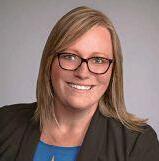
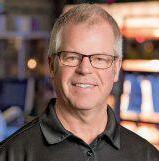
A.We deliver high-quality products, on time, at competitive prices. Many suppliers claim this but we prove it every day. There are several things that really make us stand out against our competitors: We have multiple facilities across the US; we have a facility in Suzhou, China; we are familyowned and operated, third generation; we are very diversified in our customer base and the materials and products we produce; we work hard to build long-term relationships. Most of our larger clients have been with us for more than 20 years and many for more than 40 years.
Ethics and integrity matter here and we look for clients who want that same level of trust and mutual benefit from our relationship.
Automotive is a big player in our industry, so everyone is closely watching what is happening in this sector, as it could define the future, at least in the near term. About 13% of our business is in the automotive sector.
Because our markets and customers are so diverse we have seen both increases and decreases in demand, depending on the product. Generally, our business is down slightly. Some facilities have been severely impacted by slowing orders. All of our facilities have had to make changes to protect our team and keep them safe so we can continue to run production around the clock. All of our facilities are designated “critical and essential,” the pandemic never completely shut us down. Working from home when possible, and following CDC guidelines: not coming into work if you don’t feel well, cleaning, hand sanitizing, social distancing, and the use of face masks when distancing is not possible are some of the strategies we have used to keep employees safe, healthy, and our operations running.


All of our team members have really stepped-up to meet the challenges the pandemic has brought us. Initially, our leadership met daily, we reached out to many industry associations and our networks to learn best practices. We eliminated travel, used video conferencing, kept non-essential people out of our facilities, and educated our workforce. Everyone really pulled together and took the situation seriously. It has been very tough and we did have to do some furloughs and layoffs. Losing personnel is very difficult but we found it necessary to ensure the health and stability of the company. It is unfortunate that we needed to make some tough decisions to adjust to the new reality we found ourselves in, but we are very optimistic about our future.


A.The pandemic has been very disruptive to our industry as a whole. It is creating a lot of stress on certain companies. We are starting to see some of our competitors fail, re-organize, or be acquired. There is also a lot more interest in reshoring supplies and components by our customers. The entire supply chain is being re-evaluated with an effort to minimize risks. We believe this is a great opportunity for strong suppliers like Falcon Plastics to be positioned to win more business. However, it is a very competitive market out there, so we know we will need to work very hard to win new work.

Everybody needs it – energy to power businesses and homes, to give light when it is dark, to help keep people cool in the summer and warm during the cold months.
Fossil fuels, such as coal and oil, lead the nation’s energy sources but renewable energy has become a leading contender and continues to flex its muscles.
Renewables, or what is sometimes called green energy, is shaping the energy sector not only in the Midwest but across the country.
“I think the thing to really look at is what’s going on with the trends in energy right now,” said Dwight Patterson, CEO of GenPro Energy Solutions in Piedmont, S.D. “Renewable energy is really taking center stage in the United States as well as globally.”
Renewable energy is projected to grow substantially over the next four years, he said, noting, “it’s an incredibly fast-moving market; it’s growing very quickly.”
Two renewable energy sources in particular – solar and wind – are especially important to the Midwest.
“As a matter of fact, the Midwest is expected to be a growth area for solar energy like never before in our history,” Patterson said. “We have incredible resources in the Midwest to produce electricity with the sun; and the other side is that the cost has come down so significantly that it’s driving that market very rapidly.”
Patterson said the cost of solar energy has been coming down about 15% per year since about 2010, explaining that back then a solar-electric system cost about $7.34 a watt. Today it’s about $1.95 a watt.
“From a utility standpoint, back in 2010 it was about $4.63 a watt,” he said. “Today it’s about 95 cents a watt. It’s really all about the economics, that is what’s driving this industry. Quite honestly, we can produce electricity cheaper than they (the fossil fuel sector) can produce electricity with coal.”
According to information by the Pew Research Center, changes in renewable energy will continue to trend upward and will affect the labor market, including demand for new skill requirements.

“A key feature of the modern-day economy is the focus on activities devoted to curbing pollution and greenhouse gas emissions, economizing on fossil fuels and using more renewable sources, increasing energy efficiency, and recycling,” according to Pew. “Collectively labeled the ‘green economy,’ these activities give birth to new lines of work. They also either raise the demand for workers in existing occupations or change the skill requirements of some occupations.”
Likewise, the Midwest Economic Policy Institute (MEPI) said renewable energy is poised to be an economic engine for the Great Plains as it recovers from the coronavirus pandemic. However, it said more can be done at state levels “to maximize benefits for workers and the state economy as a whole” so they don’t have to rely so much on out-
SOLAR CONTINUES TO BE A GROWING RENEWABLE ENERGY SOURCE, ACCORDING TO DWIGHT PATTERSON, CEO OF GENPRO ENERGY SOLUTIONS IN PIEDMONT, S.D. HERE, SOLAR PANELS ARE BEING INSTALLED AT BLACK HILLS STATE UNIVERSITY. ‘WE HAVE INCREDIBLE RESOURCES IN THE MIDWEST TO PRODUCE ELECTRICITY WITH THE SUN,’ HE SAYS. IMAGE: COURTESY OF GENPRO ENERGY SOLUTIONS
of-state workers. In North Dakota, according to MEPI, that accounts for about 86% of the workforce on wind projects at a cost of more than $62 million to the state economy.
“The clean energy sector is expected to be a major job creator over the next decade,” reads the Sept. 3 report co-authored by the Institute. “Globally, research has found that doubling the share of renewable energy by 2030 would create about 24 million total jobs.”
For Patterson and his company, that’s all good news, especially since GenPro, which started as a solar water-pumping distribution company and is today a multifaceted renewable energy and efficiency business, is contributing to and following the trends, especially with the labor market as it hires and develops new employees.
Taking a peek at how much renewables have grown, the MEPI said in its Sept. 3 report that Minnesota, North Dakota and South Dakota have experienced significant changes in their electricity generation over the past decade.
Wind energy in Minnesota, for instance, made up 4% of the state’s electricity generation in 2007 and grew to 18% by 2018. Minnesota ranked seventh in wind energy generation, despite having the 17th largest economy and being one of the top 10 states with the highest capacity of wind production.
North Dakota, which still relies heavily on fossil-fuel sources, is ranked 12th in the nation with wind being the “most prevalent renewable
resource” and accounts for about 78% of the clean energy installed.
South Dakota tells a different story, according to the report. More than 600 wind turbines at 16 active wind farms supplied about one-fourth of South Dakota’s net electricity generation in 2018.
“What has really propelled the growth and development is innovation,” said Jeff Danielson, central region director for the Washington, DC-based American Wind Energy Association, which has 1,000 member companies across the country. “The wind industry costs have come down nearly 60% to 70%. So today, wind energy is the cheapest form of energy on the electric grid, and we don’t see that changing in the near future.”
Danielson told Prairie Business that Iowa leads the nation in wind capacity, followed by Texas, but that other Midwestern states are poised for continued growth, meaning more jobs.
“There’s no question the energy industry is a job creator,” he said, explaining the position of wind technician – “the guys and gals who go up into the turbines to do maintenance after they’re installed” – is the second fastest energy growing job in the United States. The first, he said, is solar installer.
“It’s really clear that clean energy is fueling new job growth in the United States,” Danielson said. “If you look where it’s occurring, it’s even more important for states like Minnesota, North Dakota, South Dakota and Iowa. These are national statistics, which means it’s even more amplified in those states where that activity is occuring.”

He also said the industry could play a factor in how much the economy recovers from the coronavirus pandemic, noting “there’s no question that clean energy could be one of the leading ways to do that” through job creation.

Advancements in technology also have played a part in industry growth, even with simple things such as creating longer blades for wind turbines.
“From the early 2000s to where we are today we’ve seen tremendous advancements in technology” such as longer blades to harness energy and at lower wind speeds, said Ben Fladhammer, communications manager with Minnkota Power Cooperative, a generation and transmission cooperative based in Grand Forks, N.D. “We are seeing more production out of a wind farm today than we would have seen even 15 years ago. … We’ve seen wind go from almost no part of our energy mix to being a significant part of our energy mix today.”
The cooperative purchases wind energy from three wind farms, operated by NextEra Energy Resources, near Center, N.D., Langdon, N.D., and Valley City, N.D. About 34% of Minnkota’s generation capacity comes from wind.



“At one point we were, and I think we still are, among those having the highest percentage of wind in our system amongst electric cooperatives in the country,” Fladhammer said. He said Minnkota is at or near wind-farm capacity. Some challenges he sees with the wind sector is the Renewable Electricity Production Tax Credit for wind, which is a big driver of wind projects.

“That’s scheduled to phase out here fairly soon,” he said, “and so I think when it runs out, or is phased out, you’ll see project development slow down.”


Patterson, with GenPro, said there are some challenges he is seeing in the renewables industry as well, but he looks at these changes as opportunities rather than trials, especially as they relate to job growth.
“The difficulty I would say in the market right now is that it’s growing so quickly, and the cost has come down so dramatically, that there’s a lot of companies out there that would like to engage in the marketspace but aren’t really sure how to approach it,” he said. “I think that’s where GenPro really shines and why we’ve grown so significantly. ...
continued on page 29

Seventy-seven years ago to the day of this article being written, the US began a massive operation to use its-then state-of-theart aircraft to deny its enemies of oil in Ploiești, Romania. In North Dakota, better than perhaps anywhere else in the US, we currently stand on the brink of the ability to use our-now state-of-the-art aircraft technologies in ways where a byproduct of which will partially deny foreign powers our dependence on their oil.
These, namely, are unmanned aircraft systems (UAS) technologies, and they do more than simply offer token compensation for the difficulties endured by North Dakotans during the pandemic and recent oil price crash. They are, in many ways, a strong answer to how North Dakota can continue to produce oil in its traditionally innovative ways.
North Dakota’s probably most rich UAS ecosystem in the country has culminated into a huge success coming out of Grand Forks’ Northern Plains UAS Test Site, which operates under an authority chaired by Lt. Gov. Brent Sanford, a man steeped in oil. This initiative is called the “Statewide Network,” abbreviated to “SWN,” and is a patchwork of radar systems first in line to be approved by the FAA for the use of drones to fly beyond-visual-line-of-sight (BVLOS). Readers should identify BVLOS with the goal everyone in the UAS industry is striving toward, though as of right now, such missions at scale are illegal due to safety considerations of UAS potentially flying near manned aircraft. These radar systems that three systems integration companies will be installing first in Watford City in the coming few months will be able to satisfy the FAA’s safety concerns and deconflict UAS with general aviation pilots.
Much of this project traces its lineage to the last biennium and the North Dakota Legislature’s House Bill 1018. More than $30 million was allocated to the initiative, which should prove an admirable investment by the state as other states may look to extend the North Dakota network to their state. In order to fly on the network, pilots must agree to pay 3% of the gross income of BVLOS missions flown to the North Dakota State Treasurer on a quarterly basis. This is one way UAS are going to stimulate the North Dakota economy in ways other states cannot match.
The SWN will serve as a force multiplier for the ways that UAS are already bringing value to the Bakken, and will also open new missions to the operators in the oilfields. Right now, UAS flying Optical Gas Imaging (OGI) sensors in the Bakken can help show the condition of flare stacks and if there are fugitive emissions from pumps, pipelines, or other assets. These aircraft could be flown more efficiently if they didn’t need to land so frequently and could fly, rather than be driven to, other oil asset locations.
LiDAR, or Light Detection and Ranging sensors, are also game changers in the Bakken when flown from UAS in order to give the centimeter-level accuracy of the topography around oil assets. The network will pave the way for larger drones to fly LiDAR systems over pipelines for greater distances, keeping oil companies in compliance and reducing their needs for capital expenditures on maintenance.
In the event of a spill, the rapid deployment of long-range UAS flying BVLOS will be able to get real-time situational awareness of the
ONE THING THAT THE NORTH DAKOTA UAS ENVIRONMENT HAS SHOWN IS THAT DRONES SAVE MONEY. IN TOUGH TIMES, WITH PRICES DOWN AND A GLOBAL PANDEMIC, IT WOULD MAKE SENSE TO FASTEN FURTHER ON WAYS TO EASE THE ECONOMIC BURDEN. FOR OIL COMPANIES, DRONES ARE A GREAT WAY TO DO THAT. IMAGE: COURTESY OF SKYSKOPES
affected area faster than other methods. This type of disaster response scenario is impossible without such a network of radars. Routine inspections of pipelines are mandated under US code and federal regulations, which, regarding oil companies, says, “Each operator shall, at intervals not exceeding 3 weeks, but at least 26 times each calendar year, inspect the surface conditions on or adjacent to each pipeline right-of-way.”
The AUVSI economic impact study of 2013 claimed that North Dakota UAS would generate $83 million in economic stimulation, create $400,000 in tax revenue, and create 105 jobs by 2025.
The state of North Dakota’ legislature alone has already eclipsed the AUVSI’s projections of economic impact with five years to go, and the numerous private firms in North Dakota have a good chance of, in aggregate, eclipsing the $83 million number themselves in the coming half decade. With a SWN about to go operational, the AUVSI’s economic numbers will continue to pale. North Dakota UAS will be measured in the hundreds of millions by 2025.
The immense value of the SWN being orchestrated by the Northern Plains UAS Test Site is palpable. The leadership at the test site, and preliminary results of the program, are exemplary-enough to the point where legislators in North Dakota should already be thinking about another allocation for the SWN at the upcoming legislative session. This technology is solidifying North Dakota’s place at the vanguard of the drone megatrend, while proving a true boon to North Dakota’s largest economic pillar: energy.
To the personnel at the oil companies in the Bakken, it is advisable for you to look into the ways UAS would be able to save your organization on costs, while providing new data value and improving safety factors.

One thing that the North Dakota UAS environment has shown is that drones save money. Their cost savings potential with the SWN is only going to increase, warranting further consideration of their use. In tough times, with prices down and a global pandemic, it would make sense to fasten further on ways to ease the economic burden. For oil companies, drones are a great way to do that.
Matt Dunlevy is the president and CEO of SkySkopes, based in Grand Forks, N.D. The company has several offices in North Dakota, with a footprint also in Minnesota, Oregon, California and Texas.
continued From page 27



“The traditional utility structure is changing,” he continued. “Even 10 years ago, utilities said they would never use solar because it wasn’t cost effective. But that’s what they’re going to now because it is the most cost-effective solution. There’s some late adopters within the industry that resisted change, but change is going to continue to happen, regardless.”


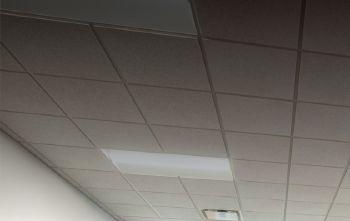

Ryan Goodsen has been interested in building for as long as he can remember. Those interests took on new meaning for him as a teenager when he started working for a construction company after graduating high school.
Goodsen today is the general manager of the Fargo, N.D., branch of McGough, a construction firm headquartered in St. Paul, Minn., but which has seven branch offices in several Midwestern states and Texas, which includes roughly 700 employees.

He said he’s been with the company now for 11 years and keeps busy with budgets, staffing, training, revenue and project delivery, as well as business development in both the Dakotas.
Reviewing the company’s history, he said McGough has built several high-profile projects in its 60-plus-year history, “including corporate campuses and office buildings; notable major educational campuses; public and worship spaces; state-of-the- art data centers, science and healthcare facilities; industrial and power projects as well as

award-winning residential, mixed-use and hospitality projects.”
Goodsen is an unassuming man, who said he has never lost interest in the construction scene but finds it still a challenging and rewarding career.
What is it about your job that makes getting up in the morning easier?
Construction is a fast-paced industry. I enjoy the challenges and continuous improvement it takes to keep up with it. This is a business built on relationships, both from a client and co-worker perspective. I enjoy working with diverse teams both internally and externally and building the lasting relationships that come from our projects. Construction brings with it a great sense of accomplishment and integrity.
What’s a typical day like for you at the office?
I try to split my time between project sites and the office. I like to be working with our teams on their projects as much as time allows. My typical day is spent between project meetings, business development and new business pursuit, pre-construction, and business operations.
As a leader, what’s the best strategy you have found to deal with challenges that may arise at work or on the job site?
As an overall statement, I would say the best strategy to deal with challenges is learn to be a good listener.
If there were a motto for your leadership style, and something you want your employees to remember about you, what would it be?
I would say my leadership style, if you were to ask our team members, would be humble, transparent, personal and team empowerment, and accountability.
If you were to hire your next employee tomorrow, what traits and skills would that employee have?
We are fortunate to be surrounded by great higher education institutions that do a great job of preparing people with the hard skills needed to succeed. I look for folks who like to work in a team environment, (who are) coachable, (and have) integrity.
What role does technology play in your role as general manager?
Technology plays a role in every aspect of construction. Virtual meetings have helped keep teams connected internally and externally. We use an overall software system to run all applications of our company, and a number of different technologies to help manage our projects, production, manpower, etc. We have projects that you may not see a set of paper blueprint drawings, but rather everything done electronically.
Are there any trends you are noticing in the industry right now?
We certainly always see and try to understand industry trends. 2020 has certainly been a peculiar year for all, and not one that industry models would have predicted. I believe most models are forecasting declining industry growth across most sectors nationally. I think a couple exceptions could be health and public safety. North Dakota, from my perspective, seems to not be hitting the dramatic declines some of the other national markets are experiencing.
The pandemic has certainly created challenges with many business and industries; what challenges have you noticed and how have you met those challenges?
We have noticed challenges similar to most businesses with staff/ employees. McGough Construction, at the start of the pandemic cre -
Fargo project manager for McGough says he’s always had a love affair with constructionTHE NEW MEMORIAL UNION BUILDING, A 154,000 SQUARE-FOOT PROJECT ON THE UNIVERSITY OF NORTH DAKOTA CAMPUS, WILL OPEN SOMETIME IN 2021. MCGOUGH SERVES AS THE GENERAL CONTRACTOR OF THE PROJECT. IMAGE: COURTESY OF MCGOUGH Ryan goodsen
ated a COVID-19 Incident Command team made up of company senior leadership team members. Our team developed and implemented company procedures based on CDC guidance, throughout all office and project sites. All compliance measures remain in place and are continuously updated as we learn new best practices. We have been impacted from working remotely throughout offices located in four different states, and projects being delivered throughout many states across the nation. Material procurement, production have also been impacted. Company team members and community safety has remained the top priority.
Going forward over the next year or so how do you view the construction industry in the region? What’s your forecast?










I think it’s only realistic to say there will regionally be impacts from the pandemic. I remain optimistic that the North Dakota and South Dakota regions will not experience the dramatic impacts of other regions.


Rural utility cooperatives that serve the Greater Grand Forks region are backing legislation that would allow them to refinance government loans at current interest rates.
The proposed legislation, called the Flexible Financing for Rural America Act, was introduced in the U.S. Senate in July by Sen. John Hoeven, R-N.D., and backed by Sen. Tina Smith, D-Minn., and two other legislators from Arkansas and Arizona. If approved, the legislation would allow electric cooperatives and rural telecommunications providers to refinance their Rural Utilities Service (RUS) debt at current market rates without penalty. The benefits of being able to do so, they say, will trickle down to customers and enable a stronger recovery from the economic challenges of the coronavirus pandemic.
“Electric cooperatives and telecommunications providers are critical to the quality of life in rural areas,” Hoeven said in a statement on July 2, noting the restrictions on U.S. Department of Agriculture RUS loans “hamper the ability of these organizations to cope with the challenges of COVID-19. The Fed reduced interest rates specifically to help businesses through this difficult time, and it makes sense to enable rural electric cooperatives and telecoms to benefit from this important tool, supporting a stronger recovery in our rural communities.”
Hoeven said rural cooperatives and businesses would gain flexibility in managing their cash flow and allow them to pass their savings on to customers.
“We’re very grateful for those loans, and we always repay our obligations,” said Rich Whitcomb, CEO of Halstad, Minn.-based Red River Valley Cooperative Power Association, noting the problem is, unlike homeowners, utility co-ops have been unable to refinance their loans. “It’s kind of an outdated quirk in the regulations.”
When a cooperative takes out a loan, for instance, it is fixed at 30 years or more and they will be penalized if they pay it off early.
“That’s fine,” Whitcomb said. “But the interest rates are so low and the economy, especially the rural economy, is hurting and fragile and we can’t refinance those loans like you can if you’re buying a house. … So, all we’re asking is to keep paying our obligations but with the ability to refinance our loans to current rates without penalty. That’s what we’re asking to do.”
Former U.S. Congressman Jim Matheson, now CEO of the National Rural Electric Cooperative Association (NRECA) in Washington, D.C., told the Herald that there is about $43 billion worth of loans from cooperatives across the country.
The NRECA serves 900 electric cooperatives in 48 states – or covers about 56% of the landmass in the country, Matheson said.
CURRENT
TO
RATES
That equates to about one in every eight Americans or a population of 42 million people served by the co-ops. They also serve about 92% of the persistent poverty areas of the country.
“And we have no shareholders to fall back on, so every issue we deal with has a financial impact that goes straight to the bottom line of the consumer,” he said. “That’s why this issue … the ability to refinance our debt at lower interest rates mean so much to us;
it all affects the consumer because of the way we’re structured.”
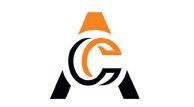
Cooperatives are employee-owned and not-for-profit.
“We estimate that if they can all refinance that debt, it would result in, over the length of time of all the debt, roughly $10 billion of savings,” Matheson said. “So this is real money for us, this is a big deal. … Unfortunately, for us to make this change, we need an act of Congress.”
The proposal has received bipartisan support from lawmakers in many parts of the country, but Matheson said he doesn’t even like to call it that.

“We like to even say it is being nonpartisan; it’s just doing the right thing for the communities we serve,” he said. “It’s not about Republicans or Democrats, and it has nothing to do with East, West, North or South, or whatever other part of the country, because we have sponsors from everywhere. That was a strategy that Sen. Hoeven suggested; he said let’s not try to run up a bunch of co-sponsors right away, but let’s get great representation across the country.”
Still, Whitcomb said it has “an upper Midwestern flavor because they (legislators) understand that in a lot of places, like here, electric co-ops are one of the real economic drivers. … We’re not-forprofit and so with the ability to refinance, that money is going to go back to the members in some form. It has to because it’s in our bylaws and that’s who we are.”

Ben Fladhammer, communications manager at Minnkota Power Cooperative, said his organization is behind the legislation. Electrical consumption from industrial sources has declined during the pandemic and there’s been an increase in unpaid bills from customers. As such, he said, it is anticipated that electric cooperatives around the country will sustain significant losses through 2022. The legislation would help meet these challenges.
“COVID-19 presents challenges for rural communities and for electric cooperatives, and we believe it’s important that Congress helps us out and takes some steps to relieve that burden,” Fladhammer said. “We feel that this is a really smart way to do that.” Minnkota, headquartered in Grand Forks, serves eastern North Dakota and northwestern Minnesota.
“Essentially, this gives us the flexibility to manage financial shortfalls and focus on long-term stability in the rural communities that we serve,” he said. “Having the flexibility to refinance our existing loans really enables us to meet the evolving needs of our member consumers and help them continue their work as partners in our communities’ long-term economic recovery.”
“Bring it on,” said Tom Edwards, accounting and finance manager at Nodak Electric Cooperative, “because this is going to save members some money.”
He said Nodak, which has about 15,000 members in Grand Forks proper and rural communities in 13 counties, currently has about 21 outstanding loans, all at variable interest rates.
“If we were able to refinance all 21 of those loans we could save $11.5 million,” Edwards said – or, broken into the number of years remaining on the loans, that’s about a half-million dollars every year for the next 23 years. “If we had to have a rate increase, it would save about a half-percent every year. If a cooperative could shave off a half-percent of their rate increase, if they needed one, it’d save the end user some money, that’s for sure.”
Edwards said, as the proposal moves forward, he anticipates discussion will happen on urban and rural topics, but he’s hopeful the legislation will pass. Congress has yet to move on the proposal, but Matheson said lobbying efforts will continue. Whitcomb said he is encouraged by what he is seeing.
“There are 67 sponsors of this bill in the House, and they’re from places like Arkansas, South Carolina, Alabama, they’re from Minnesota, Wisconsin, North Dakota. They’re spread out geographically, which gives me hope,” Whitcomb said. “And there are 19 senators who have signed on saying this makes sense. … If you think about it, we have a lot of support. That’s very encouraging to us; it is now just trying to get this across the finish line because it really would help everybody.”
Minnesota residents, who live in the land of 10,000 lakes, know about whitecaps on the water when the wind blows. Using that analogy, Whitcomb said there have been strong headwinds even before the pandemic, such as Minnesota and North Dakota farmers who had to leave their sugar beets in the field this past year or those who couldn’t harvest corn because of unfavorable weather conditions.
Whitcomb said the bottom line is that times are tough and many people have a hard time paying their bills.
“There are whitecaps in the economy right now due to the pandemic,” he said. “If this bill passes, it’ll help electrical co-ops calm those waters. This allows everyone the chance to face those headwinds from a little stronger position. … Electricity is such a basic need. If we can provide enhanced value and keep rates competitive, that’s going to help calm many of those whitecaps.”

FARGO, N.D. • Logan Dahlgren has joined Enclave as senior accountant.


A native of Vergas, Minn., Dahlgren brings more than five years of experience in accounting. Most recently, he served as accounting specialist at East Shore Garment Co. in Detroit Lakes, Minn.
Dahlgren graduated from North Dakota State University with a bachelor’s degree in accounting. He currently serves as a city councilman and volunteer fireman in Vergas, Minn.
MINOT, N.D. • Zeb Pulkinen joins Houston Engineering Inc.’s Minot team as a Technician I. He will primarily work in the field, providing survey and construction observation services for projects across western North Dakota.
A Minot native, Pulkinen has watched floods, oil booms, and other events create an ongoing need for new reliable infrastructure throughout the region.
He earned his associate degree in petroleum engineering technology from Bismarck State College and his bachelor’s degree in geology from Minot State University. Pulkinen’s experience and education make him a great addition to HEI’s team to ensure infrastructure being built will serve clients for years to come.
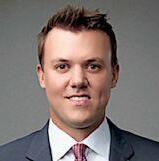

ST. PAUL, Minn. • KLJ Engineering welcomes Arash Moin and Amy Mathews to its St. Paul office.
Moin has joined the team as a civil engineer with a focus in civil water. He has a bachelor’s degree in civil engineering with an emphasis in water resources from the University of Minnesota-Twin Cities.

Mathews comes to KLJ as a content strategist. She has a bachelor’s degree in journalism and mass communication, as well as graphic design, from Drake University.
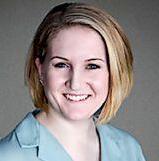
GRAND FORKS, N.D. • Kevin Cooper has been hired as a developer at Red River Regional Council. With funding provided by the US Department of Commerce Economic Development Administration, Cooper will be leading economic recovery and resiliency strategic planning in Region 4, which includes Grand Forks, Nelson, Pembina, and Walsh counties.
Cooper comes to RRRC with nearly 30 years of experience in economic development and higher education. He earned his bachelor’s degree in business administration from Mayville State University, and a master’s degree in business administration from the University of North Dakota. He earned certifications as an Economic Development Finance Professional through the National Development Council, and Strategic Planning Professional from the Association for Strategic Planning. He is a past president of the Economic Development Association of North Dakota.
MITCHELL, S.D. • The Mitchell Prehistoric Indian Village has hired Kimberly Burg to the newly created position of assistant executive director.
Burg will focus on marketing, membership, events and grants.
She has a bachelor’s degree in park and recreation management from South Dakota State University and completed a Leisure Time Business Management Internship at Walt Disney World in Florida. She has worked in city, state, and national parks in South Dakota, North Dakota and Wisconsin. Most recently she worked for the City of Mitchell at James Valley Community Center.
The Mitchell Prehistoric Indian Village, located north of Mitchell, is the only active archaeological site in South Dakota that is open to the public. Burg has a bachelor’s degree in park and recreation management from South Dakota State.
FARGO, N.D. • Essentia Health has recently welcomed new doctors at clinics across the region, including the following:
Dr. Michaela Heller is welcoming new patients at the Essentia Health clinic at the 32nd Avenue clinic in Fargo.
Dr. Heller earned her medical degree from University of North Dakota School of Medicine and Health Sciences in Grand Forks, N.D. Her residency was at Akron General Medical Center Obstetrics & Gynecology in Akron, Ohio
Dr. Jessica Munro is welcoming new patients at Essentia Health-South University Clinic, also in Fargo.

Dr. Munro earned her degree from Illinois College of Optometry in Chicago.


Andrea Solberg, CNP, who specializes in obstetrics and gynecology is welcoming new patients also at the 32nd Avenue clinic in Fargo.
Solberg earned her Master of Science in Nursing degree from Maryville University, St. Louis, Mo. and is board certified by the American Academy of Nurse Practitioners.
RAPID CITY, S.D. • Urologists Melissa Brown, M.D., and Russell Hayden, M.D., recently joined the Monument Health Rapid City Medical Clinic on Fifth Street in Rapid City, S.D.
Dr. Brown is a Urologist with more than 27 years of experience treating the full spectrum of general urology conditions. She is also a clinical instructor with the University of South Dakota’s Sanford School of Medicine.
Before joining Monument Health in the Black Hills, Dr. Brown practiced in Aberdeen and also spent time in Arizona, Minnesota and Massachusetts. She is a member of the American Board of Urology, the American Urological Association and the Society of Women in Urology. She is also a Fellow of the American College of Surgeons.
Dr. Hayden is a Urologist with a sub-specialty in male infertility. He completed his residencies in General Surgery and Urology from Massachusetts General Hospital in Boston.

Before joining Monument Health, he served as the Fellow in Male Infertility and Sexual Medicine and as an Instructor of Urology at Weill Cornell Medicine in New York.
He is a member of the American Urological Association, the American Society for Reproductive Medicine, the Society for Male Reproduction and Urology, the Society for the Study of Male Reproduction and the New York Academy of Sciences. He has published papers, written chapters and presented on several topics, including vestibular prostheses, azoospermia metastatic prostate cancer and more.
Civil &MunicipalEngineering &Planning
Water &WastewaterEngineering
TransportationPlanning &Engineering
Bridge&StructuralServices
AviationServices
Water ResourcesEngineering
Planning &UrbanDesign
LandSurveying

GeographicInformationSystem
Project Funding &Financing


What are some things your company does to make sure employee meetings, including those done virtually, are productive and time efficient?
Mike Delfs President and CEO Jamestown Regional Medical Center Jamestown, N.D.
Whether before this pandemic or during, we begin and end meetings on time. We arrive prepared – our leaders check their calendars before the upcoming week to prepare for what is to come. It’s rare that a team would show up to a meeting and say “what are we talking about?” We set meeting agendas and share the why behind scheduling. In addition to time efficiency, we keep meetings productive by creating a culture of psychological safety. If employees can’t feel safe sharing ideas –even the bad ones – our creativity and innovation suffer. If those suffer, so does the organization. Our culture is one of trust and appropriate risk taking. Because of that, we are grateful to say we are both a Top 20 Critical Access Hospital in the country and a Top 100 Best Places to Work in the nation.
In efforts to work swiftly, communicate effectively and to be clear and concise on roles and goals, Choice Bank has worked intentionally and carefully to set up our committee and meeting structure. This structure provides a framework for the movement of information whether that be up, down or sideways. Each participant has defined roles in which they can bring their unique contributions, and our cultural norms set the stage for open and honest communication allowing all voices in the room to be heard. This structure allows team members at all levels within the organization to contribute without being restricted by traditional layers and hierarchy. It has allowed us to bring to the forefront what matters most, instead of being limited to the old agenda and minute format of the past.








 Grand Forks, N.D.
Grand Forks, N.D.
We are a small and ambitious team of four full-time professionals, providing community and economic development services throughout Grand Forks, Nelson, Pembina and Walsh counties in northeastern North Dakota. We manage and coordinate several internal and external Board of Directors or groups as well as numerous funding programs. We have biweekly Monday morning staff meetings as well as periodic. The meetings are scheduled out for a couple months in advance and agendas provided. We use this time for project/program updates, deadlines, upcoming meeting and travel coordination, and other goings-on in the region that may be pertinent as issues or opportunities.
We strive to continually leverage each other’s strengths and collaborate as a team, and having regular meetings keeps us on track. We also take time to recognize recent project or staff successes as well as a standing “festivus” or “airing of grievances” agenda item to address any prickly topics proactively. In addition to our team meetings, we regularly use meeting requests and have access to each other’s calendars to schedule internal meetings. We typically have prepared materials or discussion points for these meetings to focus our time and energy efficiently.







Essentia Health’s Process Excellence team, led by Jessica Block, shares her team’s top five recommendations for effective and efficient virtual meetings. First, the meeting planner should create a well-planned agenda with various presenters to provide variation and keep the team’s attention. Second, engage the team. Encourage everyone to turn their cameras on! Consider an ice-breaker question to start off your meetings if team members are unfamiliar with each other. During the meeting, make sure you allow enough time when asking questions so people can unmute and provide their input. If no one speaks up, call out to people you think should have input. Third, define the meeting objectives at the start so the team knows what outcomes are needed before the meeting ends. Fourth, refine the attendee list so all members can be active participants. This allows an “around the table” opportunity for everyone to provide thoughts and feedback. Lastly, hold informal conversations prior to gathering so expectations are set to keep momentum and progress during the meeting. And, don’t forget that virtual meeting fatigue is a real thing. Our minds and bodies become tired from sitting in the same spot, staring at tiny boxes of people on our screens.



U.S. import prices increased 0.9% in August following a 1.2% advance in July, the latest numbers released by the U.S. Bureau of Labor Statistics. Prices for U.S. exports rose 0.5% in August, after increasing 0.9% the previous month. Over the past 12 months, import prices fell 1.4% and export prices declined 2.8%.
In August, the unemployment rate declined by 1.8 percentage points to 8.4%, and the number of unemployed persons fell by 2.8 million to 13.6 million. Both measures have declined for four consecutive months but are higher than in February, by 4.9 percentage points and 7.8 million, respectively. Source:
U.S. scheduled passenger airlines reported a second-quarter 2020 after-tax net loss of $11 billion and a pre-tax operating loss of $16.2 billion. These secondquarter losses are the second consecutive quarterly losses following 27 consecutive quarterly after-tax net profits and 35 consecutive quarterly pre-tax operating profits. The financial reports are filed quarterly with the Bureau of Transportation Statistics.
2Q 2020 Net Loss: -$11 Billion
15.8 Billion From 2Q 2019
The Freight Transportation Services Index (TSI), which is based on the amount of freight carried by the for-hire transportation industry, rose 0.3% in July from June, rising for the third consecutive month, according to the latest data released by the U.S. Department of Transportation’s Bureau of Transportation Statistics. From July 2019 to July 2020, the index fell 7.8% compared to a rise of 2.9% from July 2018 to July 2019 and a rise of 5.8% from July 2017 to July 2018.
From previous month: 0.3%
From same month of previous year: -7.8%
Source: U.S. Bureau of Transportation Statistics
Source: U.S. Department of Transportation’s Bureau of Transportation Statistics


You would goanywhere toget the right care— but you don ’t have to. You’re here. In the place we call home. And here is where thebr ightes t minds come together to tackle the toughest challenges . With expert cancer care and cutting- edge treatments we show the world what we ’re made of. In this place, we never gi ve up.
